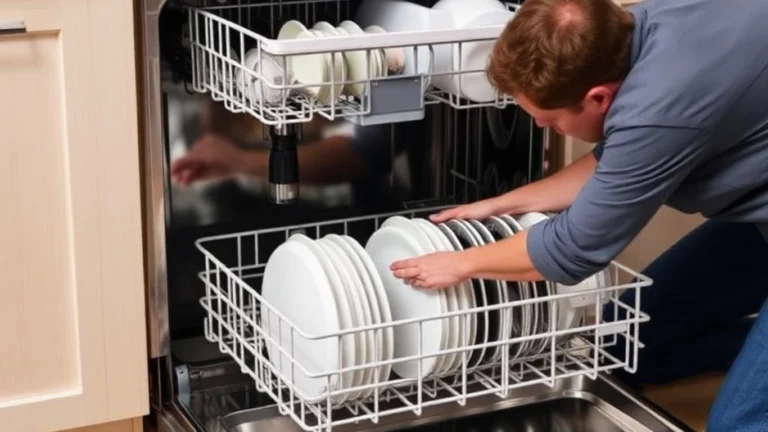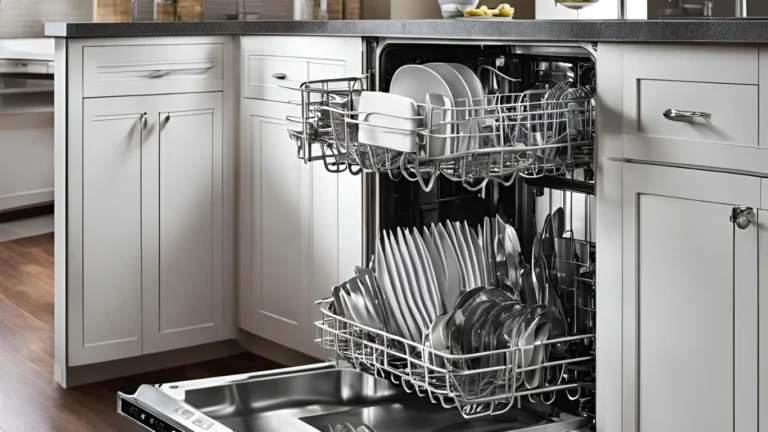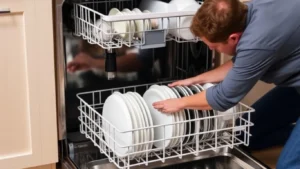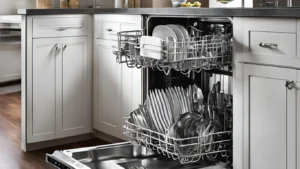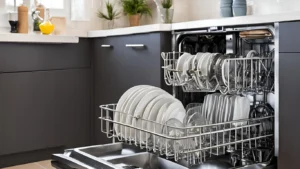GuideDon’t let the prospect of dishwasher installation intimidate you, with a few tools and some simple guidance, this is a project you can embrace! Whether you are a homeowner, replacing an old appliance, or an apartment dweller, installing a new appliance for the first time, this step-by-step guide will walk you through the process, from start to finish until you have a successful installation with as little stress as possible.
From preparing the space to connecting the utilities, and performing a test, this guide will help you save money, avoid installation mistakes, and be using your dishwasher in no-time.
Tools and Materials
Before getting started, it is a good idea to collect the necessary tools and materials. The more prepared you are, the more efficient you will be.
Tools :
- Adjustable wrench.
- Screwdrivers (Phillips and flathead).
- Drill, and bits if necessary.
- Measuring tape.Bucket or towels.
- Level.
Materials:
- Teflon tape.
- Wire connectors, and electrical tape if necessary.
- Dishwasher installation kit (Typically includes a drain hose, water supply line, and fittings).
You may be able to pick most of these items up at your local hardware store, or they may have come with your dishwasher.
Step 1: Measure the AreaPrior to buying or installing your dishwasher
Determine if it will fit into the area designated for it. Standard dishwashers are usually 24 inches wide, so measure these things, to be sure:
Width: Measure the width of the cabinet opening.
Height : Measure the distance from the floor to the bottom of the countertop.
Depth : Measure the distance from the back wall to cabinet front.
This assures you will not encounter problems. If you are replacing an old dishwasher, it is likely the sizes will be compatible, but it is worth verifying the measurements.
Step 2: Prepare the AreaClean and prepped area is important for a smoother installation.
Before proceeding with the installation, follow these steps to get your area ready:
Turn Off Utilities: Make sure to turn off the water shut off valve (under the sink) to protect against leaks.Then turn off the power at the circuit breaker for safely avoiding electrical hazards.
Clear the Area: It will be helpful to remove all items under the sink and/or surrounding where the installation will take place.
Inspect Connections: Check to ensure you have a water supply line, drain line, and electrical outlet. If you have any of these items unavailable, a plumber or electrician may need to be scheduled prior to installing.
By taking the time to get this area ready to install will help avoid mistakes.
Step 3: Take Out the Old Dishwasher (If Applicable)
If you are replacing an existing dishwasher, you need to take it out of its space safely, as follows:
- Unhook the water supply line (which may have a compression fitting). You will want a bucket or towels handy to collect any excess water.
- If the dishwasher is installed with an electrical connection instead of a plug, unfasten the electrical wires. Just make sure to note the order of connectors for the new dishwasher.
- Remove the screws securing the dishwasher to the countertop or adjacent cabinetry with the mounting brackets.
- Slide the old dishwasher out of its space, being careful to not bend the water or drain lines.
- Lastly, be sure to recycle the old dishwasher or arrange for it to be picked up by waste management services.
Step 4: Set Up Your New Dishwasher
Now you’re ready to set up the new dishwasher!
Follow these instructions carefully to ensure a successful setup.
Attach the Drain Hose:
Connect the drain hose to the outlet of the dishwasher and secure it with the clamp that came with your new dishwasher.
Thread the hose through the cabinet opening under the sink. Make sure the hose doesn’t have any kinks this will allow water to flow.
Connect Water Supply Line:
Wrap Teflon tape around the threads of the water inlet valve on the dishwasher.Connect the water supply line and tighten using an adjustable wrench until snug, but not too tight.
Electrical Connections:
If your dishwasher plugs into an outlet, plug it into the closest outlet. If your dishwasher is hardwired, do the following :
- Lift up and remove the cover to the junction box on the dishwasher.
- Tighten the wires with the wire connector (black wire to black wire, white wire to white wire, green or bare copper wire to the ground screw).
- Replace the cover plate.
Positioning the Dishwasher:
- Carefully slide the dishwasher into position.
- Adjust the leveling legs to make sure the dishwasher is evenly balanced–this is important to avoid water pooling inside of the dishwasher.
Fasten the Dishwasher:
Use the mounting brackets that come with the dishwasher to secure the dishwasher to the countertop or sides of the cabinet. This ensures that the dishwasher will not tip over while the door is open.
Step 5: Assess the Installation
Before patting yourself on the back for a job well done, let’s run some tests to verify everything is working properly.
Restore Power and Water:
Turn the water supply valve back on and return the circuit breaker to its original position.
Run a Test Cycle:
Run a short wash cycle and observe the dishwasher. Leak check the water supply and drain connections.
Check Performance:
After the test cycle is completed, check the operation of all interior components, such as spray arms. Leaks or other drainage issues are grounds for switching off utilities and double-checking hook ups.
Dishwasher Installation Cost Even the best
DIYer may want to enlist the aid of a professional for a more complicated installation. If you’re weighing the cost of DIY or installation help, you may want to understand the costs.
Labor Cost:
A professional is likely to charge $100.00 to $300.00 for labor alone, for an installation.
Plumbing or Electrical Work:
If ‘utilities’ such as plumbing or electricity need to be installed or modified this could add anywhere from $150 to $500.
Permits:
For installations that are a first installation, some jurisdictions require permits in the range of $50 to $200.
DIY installation generally saves money. Electrical or plumbing modification is a good opportunity for help from a professional for safety and compliance.
Frequently Asked Questions About Installing a Dishwasher
1. Is it difficult to install a dishwasher?
if you are comfortable using everyday tools and know how to make basic plumbing or electrical connections – then you should be okay. Be careful if this is the first time you have tackled this type of project; be sure to follow the manufacturer’s instructions closely, and don’t force yourself to move too quickly.
2. How much does it cost to install a dishwasher?
If you take a do-it-yourself approach, your costs will generally be limited to material costs. Professional assistance will include more costs because of labor and other services. The amount can range from $100 to $800 according insidedish.com.
3. When will I need a professional?
If you require new electrical wiring or new water supply lines, you should call an electrician and/or a plumber.
4. What are the common mistakes?
Not leveling the dishwasher when it is installed. Not inspecting pipes/connections for leaks. Forgetting to turn off the electricity or water supply (not following safety practice on shutoffs).
5. Can I use the old connections for my new dishwasher?
Yes, if the water in the supply, drain line, electrical wiring are in good condition.
Final Recommendations for a Smooth Setup
Follow the Manual :
For the best chance of success, read and follow the manufacturer’s installation instructions.
Check Connections :
Ensure that all fittings are tight and properly secured before starting any testing.
Get Help if Necessary :
If the task becomes overwhelming, don’t hesitate to call a professional.
Installing a dishwasher can be rewarding, and you will have a new kitchen appliance, and a little assistance will make it even better. With this guide, you are ready and able to tackle the task head-on!



